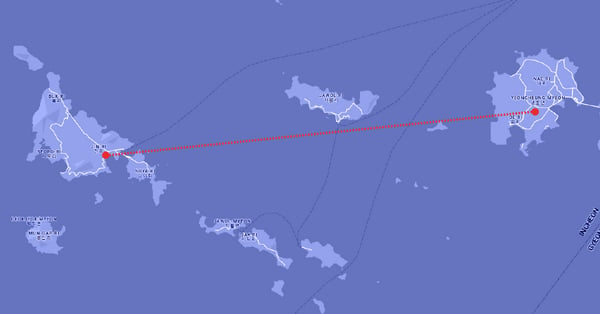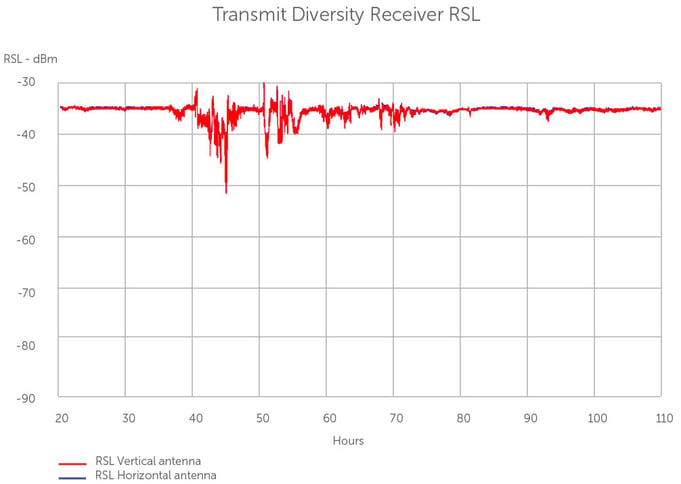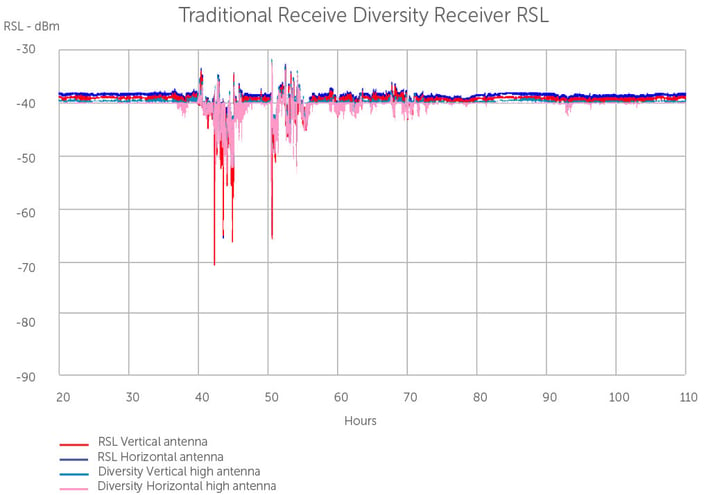The ever-growing demand for network capacity is often accompanied by the ever-growing need for increased availability, especially in challenging environments. To meet capacity and availability requirements, network operators such as mobile carriers, ISP utility companies and public safety agencies strive to modernize their networks – including their wireless backhaul infrastructure.
This need for increased capacity also leads to the transition to high modulations such as 2048 QAM and 4096 QAM, and higher channel spacing such as 56/60 MHz and 80/112 MHz, which are more sensitive to selective and flat fading. In addition to these demands, tower space and real estate resources have become more expensive, particularly in urban aggregation sites. Space diversity is an essential tool for achieving availability goals on long wireless backhaul links. The current trend of using higher modulations and wider channels creates a need for advanced space diversity techniques. A classic space diversity application requires deploying four antennas per link, which means additional expenses and tower space for network operators.
Ceragon’s unique Advanced Space Diversity (ASD) technology, which is an integral part of our multicore technology offers a solution for these challenges and helps reduce the number of radios and antennas by 25%. Ceragon launched and demonstrated our ASD technology earlier this year at the Mobile World Congress in Barcelona. While the theory itself and the controlled demonstration were exciting, field deployments throughout this year have proven beyond a doubt that Ceragon’s unique multicore technology supports the leap from theory to practice.
During 2018, Ceragon successfully deployed ASD links in operators’ mobile backhaul networks in the Philippines, Australia and South Korea, to name a few, and demonstrated the effectiveness and performance of this unique capability
ASD deployment in South Korea:
The ASD technology was successfully deployed in South Korea between two islands, in a complex environment with an over-water microwave communication link:
- Mobile backhaul link distance: 28.8 km (17.9 miles)
- Tested configuration: 2+0, XPIC
- Frequencies: 6.74 GHz and 7.08 GHz
- Channel bandwidth: 28 MHz
- Tx power: 23 dBm
- RSL: -38 dBm and -40 dBm
- Antenna separation on both ends of the link: 21 m (69 ft)
Test Location (Yellow Sea, South Korea)

The antenna separation on the Deokjeokdo Island site was 21 m (69 ft), implementing Tx diversity, while the Yeongheungdo Island site featured a single antenna, implementing BBC Rx diversity. The RSL level measured over the test period proved the system’s theoretical gain advantage. An additional 6 dB gain was measured in the Tx diversity direction versus an additional 3 dB gain in the Rx diversity direction, as depicted below.
Tx Diversity Receiver RSL

Rx Diversity Receiver RSL

Moreover, the Tx diversity mechanism proved to be resilient to selective fading, showing low RSL variance in selective fading events. An additional example of the effectiveness of this mechanism is the number of errors received in each direction.
Tx Diversity Receiver Errors

Rx Diversity Receiver Errors
ASD deployment in the Philippines:
An additional installation was successfully implemented in the Philippines:
- Mobile backhaul link distance: 15 km (9.3 miles)
- Frequencies: 6 GHz
- Availability - 99.996%
This implementation resulted in:
- 24 hours with ZERO error/packet loss with 2048 QAM modulation
- 6 dB RSL improvement due to ASD configuration
For more information about Ceragon’s Advanced Space Diversity technology, read our ASD white paper


